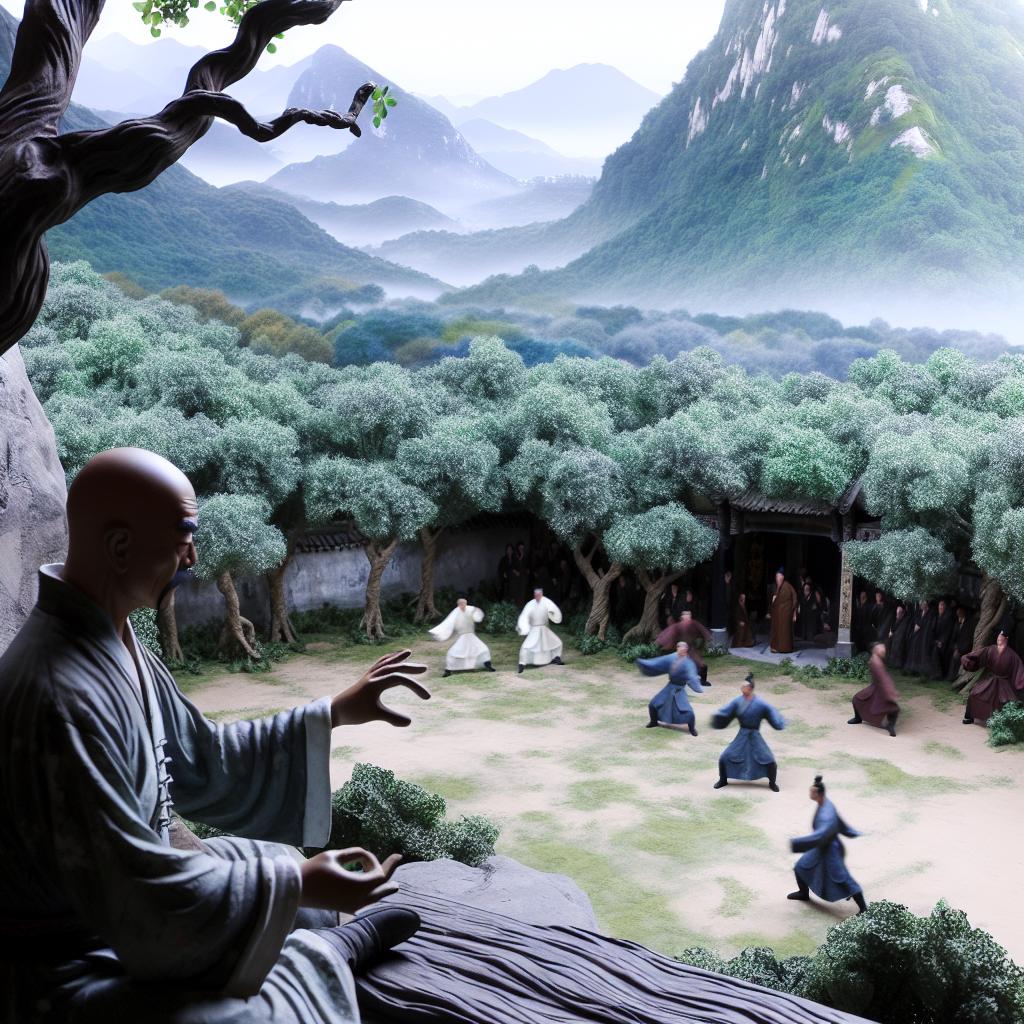
Introduction to Shaw Brothers’ Shaolin Films
The Shaw Brothers Studio, a distinguished Hong Kong film production company, significantly contributed to the emergence and popularization of martial arts cinema, particularly during the 1970s and 1980s. Within their extensive array of films, the Shaolin films distinguish themselves through their distinctive storytelling style. These films concentrate on the lore surrounding the legendary Shaolin Temple, weaving narratives that involve its philosophies and the lore of its renowned martial arts monks.
Narrative Framework
The Shaolin films crafted by the Shaw Brothers often adhere to a particular narrative framework that seamlessly integrates action with moral and philosophical themes. Typically, the stories explore the journey of a young protagonist who embarks on a path of rigorous training at the Shaolin Temple. This character strives to achieve mastery over martial arts skills, embodying a journey that is as much about internal transformation as it is about physical prowess. The protagonist’s journey frequently involves overcoming personal flaws and adversities. Such narratives provide a canvas for illustrating a metamorphosis that is both physical and mental.
Character Development and Archetypes
At the heart of these narratives is a diverse set of character archetypes that drive the story forward. Characters such as the wise master, the rebellious student, and the formidable antagonist are central to the plot structure. The wise master often serves as a venerable guide, imparting wisdom and instilling discipline in the protagonist. Conversely, the rebellious student is typically unruly, defying conventions and established norms, but ultimately learning valuable lessons throughout their journey. The powerful antagonist stands in stark contrast, challenging the protagonist and driving the narrative toward a climactic conflict.
Character development, while straightforward, is profoundly effective in Shaw Brothers’ Shaolin films. The films meticulously focus on the evolution of the protagonist from a novice to a martial arts expert. This growth is measured not just by physical skills but also by the virtues taught at the Shaolin Temple, such as discipline, perseverance, and moral integrity. By portraying this transformation, the films emphasize core values which resonate with audiences, accentuating the protagonist’s development alongside the teachings of the Shaolin Temple.
Action and Choreography
An integral element of Shaw Brothers’ Shaolin films is the action sequences, marked by intricate choreography and dynamic combat scenes. These films deviate from Western action conventions that often rely on gunplay. Instead, Shaolin films prioritize hand-to-hand combat and weaponry, exhibiting the endurance and skill inherent in martial arts disciplines. Every punch, kick, and weapon clash is executed with an emphasis on authentic martial arts techniques. This authenticity contributes to the immersive quality of these films, captivating audiences with high-energy, meticulously choreographed sequences that celebrate the artistry of martial combat.
Themes and Philosophical Elements
Beyond the fast-paced action and choreography, Shaw Brothers’ Shaolin films weave themes derived from Chinese philosophy and Buddhist teachings into their narratives. Within these films lie elements of self-discovery, righteousness, and the enduring battle between good and evil. Such philosophical undertones enrich the storytelling, offering audiences more than just the spectacle of martial arts, but also a reflection on deeper moral and ethical questions.
The themes explored often present introspection and enlightenment as forms of personal triumph, suggesting that true strength comes from understanding oneself and adhering to a righteous path. The films advocate for a balance between the mind and body, encouraging viewers to consider the importance of inner peace and morality.
Cultural Impact and Legacy
The influence of Shaw Brothers’ Shaolin films extends beyond mere entertainment. They played a significant cultural role in shaping perceptions of martial arts and Chinese culture worldwide. By introducing audiences to the artistic and philosophical dimensions of martial arts, these films contributed to a broader understanding and appreciation for the genre. The Shaw Brothers’ portrayal of the Shaolin Temple and its philosophies resonated globally, sparking interest in martial arts traditions and attracting enthusiasts from diverse backgrounds.
Moreover, the legacy of these films can be observed in the way they have inspired countless filmmakers and artists. Their impact is evident in the continuing popularity of martial arts cinema and its integration with different cultural narratives. The archetypes and themes introduced by Shaw Brothers have become enduring tropes within the genre, influencing not only subsequent films but also other creative forms such as literature, comics, and video games.
The enduring appeal of the Shaw Brothers’ Shaolin films lies in their ability to convey compelling stories that transcend cultural boundaries. Through a combination of visually engaging action, philosophical exploration, and character-driven narratives, these films have left a lasting imprint on global cinema.
In conclusion, Shaw Brothers’ Shaolin films hold a special place in the realm of martial arts cinema. Their unique approach to storytelling, through a fusion of action, philosophy, and character growth, offers more than mere entertainment. These films stand as cultural artifacts, representing a pivotal moment in cinematic history where Eastern philosophies and martial arts captivated audiences worldwide, laying the foundation for future explorations in the phenomenal world of martial arts storytelling.
This article was last updated on: August 10, 2025

